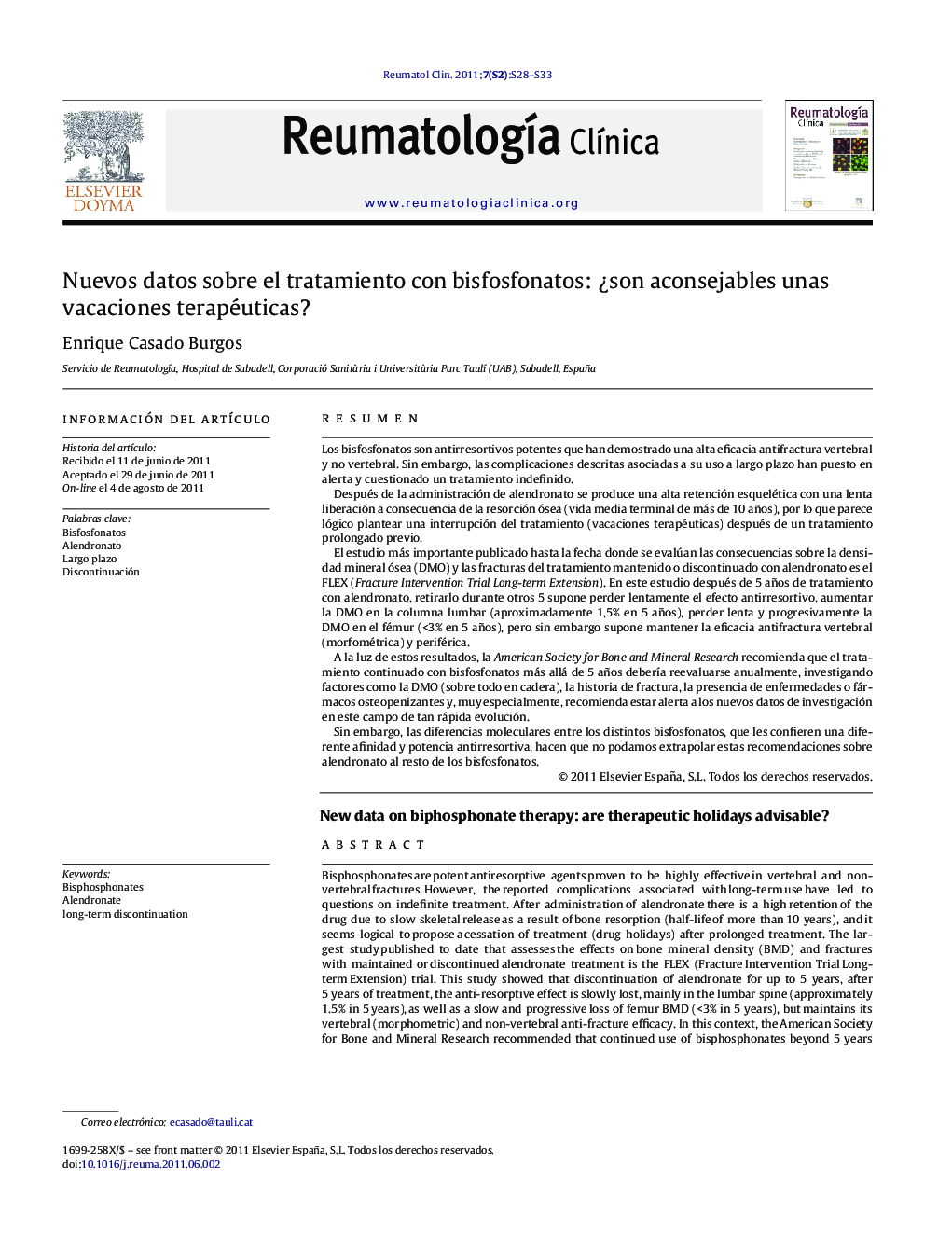| Article ID | Journal | Published Year | Pages | File Type |
|---|---|---|---|---|
| 3383406 | Reumatología Clínica | 2011 | 6 Pages |
Abstract
Bisphosphonates are potent antiresorptive agents proven to be highly effective in vertebral and non-vertebral fractures. However, the reported complications associated with long-term use have led to questions on indefinite treatment. After administration of alendronate there is a high retention of the drug due to slow skeletal release as a result of bone resorption (half-life of more than 10 years), and it seems logical to propose a cessation of treatment (drug holidays) after prolonged treatment. The largest study published to date that assesses the effects on bone mineral density (BMD) and fractures with maintained or discontinued alendronate treatment is the FLEX (Fracture Intervention Trial Long-term Extension) trial. This study showed that discontinuation of alendronate for up to 5 years, after 5 years of treatment, the anti-resorptive effect is slowly lost, mainly in the lumbar spine (approximately 1.5% in 5 years), as well as a slow and progressive loss of femur BMD (<3% in 5 years), but maintains its vertebral (morphometric) and non-vertebral anti-fracture efficacy. In this context, the American Society for Bone and Mineral Research recommended that continued use of bisphosphonates beyond 5 years should be reevaluated annually, assessing factors such as BMD, particularly in the hip region, fracture history, newly diagnosed underlying conditions or initiation of other medications known to affect skeletal status, and new research findings in a rapidly evolving field. However, the molecular differences between bisphosphonates, provides them different affinity and antiresorptive potency, so we can not extrapolate these recommendations to bisphosphonates other than alendronate.
Related Topics
Health Sciences
Medicine and Dentistry
Immunology, Allergology and Rheumatology
Authors
Enrique Casado Burgos,
